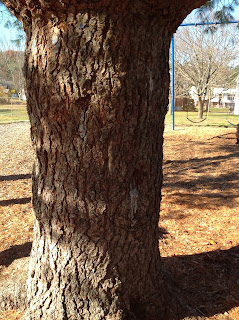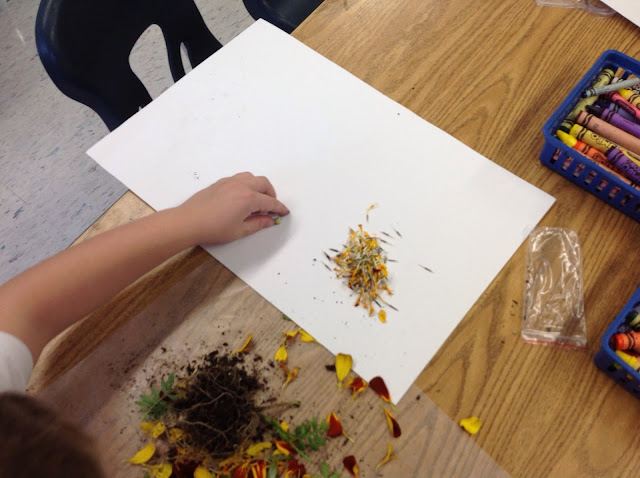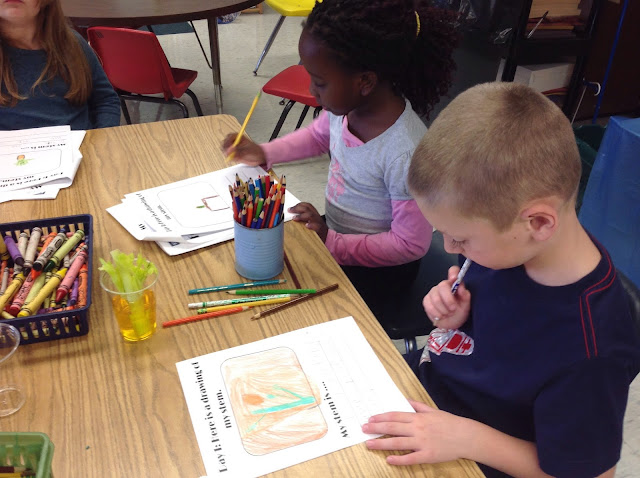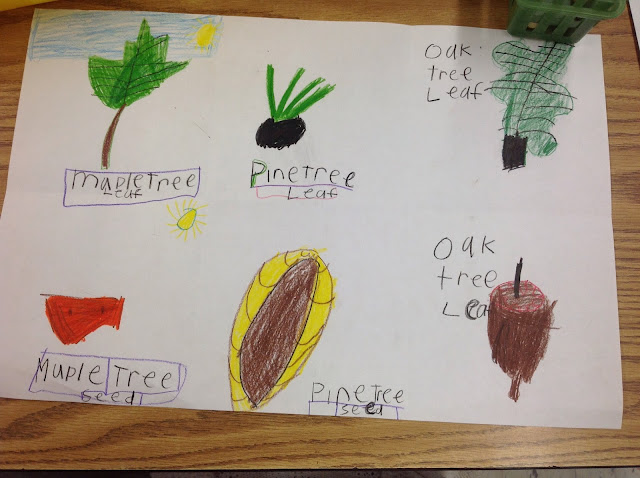We listed what we thought we already knew about plant parts and their functions prior to our experiments.
1. First we looked closely at plants and their parts by dissecting a mum, drawing its various parts and writing about what we noticed:
2. Then we drew and labeled the plant parts.
3. We took pictures of our drawings and then walked around the room to see what others had done.
4. Next we brainstormed what plants need to be healthy:
5. Our Stem Experiment was next.
We then predicted what would happen if we put celery stems into colored water and recorded them in our Super Stems Journal. After letting the celery sit in the water for a few days, we then observed how our celery changed color. After cutting the celery horizontally we were able to see the path of the colored water. We discovered that the celery acts like a straw by sucking water up from the cup and sending it to its leaves. We could actually see where the water had traveled because it was colored!

We then planted a seed along the side of a transparent plastic cup and observed what happened.
7. While we waited for our roots to grow, we drew and labeled the parts of a plant on our iPads.
8. Then it was time to observe bigger plants -- trees!
We took the time to observe and draw the leaves and seeds of three different trees that we see in our playground every day -- oak, pine and maple.
9. Tree Walk!
Ms. Pavlicek from the Science Center came to Francis Wyman and took our class on a tree walk. We took pictures of pine, oak and maple trees. We also took pictures of their seeds, trunks (stems) and leaves on our iPads.
 |
| Here is a picture of our maple tree in the Fall. |
 |
| Here is the Maple Tree seed. |
 |
| We found Maple tree leaves and took photos of them. We did the same with the Pine and Oak tree. |
 |
| Here we are taking a picture of a pine tree's seed -- the pinecone! |
 |
| Our playground's pine tree. |
 |
| A Maple tree leaf. |
 |
| A Pine Tree trunk. |
11. Lastly, we made plant models using various classroom materials. We then used our models to share what the function was of each plant part -- from the roots to the stem to the leaves, flower and seeds.


Finally, we revisited what we thought we knew about plant parts and their function at the end of our unit! We know so much now!
































































































































